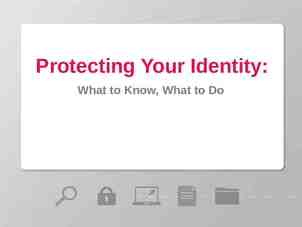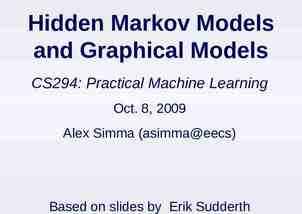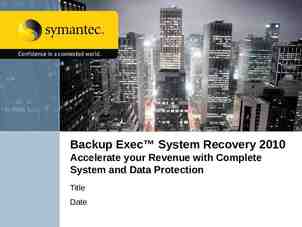IT Governance and Management Structure A. B. C. D. E. F.
13 Slides1.35 MB

IT Governance and Management Structure A. B. C. D. E. F. Re-Structuring IT Governance and Management: Why Now? Opportunities; Challenges Transition Structure “Steady-State” Structure Guiding Principles Next Steps: Next 30-90 Days

Re-Structuring IT Governance and Management: Why Now? 1. Retirement of the CIO 2. Completion of IT Spending Exercise (FY 2015) 3. Mike Lehman’s willingness to continue to serve after stepping down from Interim VCFA position and after completing IT Spend Exercise. 4. New VCFA arriving to UW-Madison. These changes present an opportunity to re-evaluate the campus IT position, structure, governance, decision making, IT priorities, and funding. Replacement CIO will be recruited after completing the new governance structure. We will be able to recruit high-caliber CIO; s/he will be in a better position to be successful.

Opportunities; Challenges Create a comprehensive IT strategic plan: Focus on service, value. Prioritize IT investments: o Better coordination of investments. o Ensure that investments in IT are both effective and efficient, and meet campus needs in a cost-effective manner. Establish a new funding/budget/internal-billing model. Increase service levels and potentially reduce costs by working more closely together. Better security.

1. Investment in creating the governance structure is long term. 2. Basic governance structure will remain after a permanent CIO is hired: Steady-State Structure (next chart).

Iterative, Tight Decision-Making Loop: Collaborative Teamwork Executive Board Provost Chancellor VCRGE VCFA UC IT Steering Committee (ITSC) Shared Governance ITC Planning, Strategy, Decision-Making, Assessment Focus: A. Strategic Leadership: Develop overall IT strategy FP&P 6.42: Ensure that investments in IT are: Policy and Planning for IT o Prioritized, meet campus needs Across the University: in cost-effective manner A. Review and Make Create new business model for Recommendations delivery of IT services across campus on Strategic IT Plans B. Decision-Making: Investments, Services Core IT infrastructure, strategic IT B. Recommendations on projects, initiatives, services Re-Structuring IT IT funding/budgets; Internal billing Services Across Campus C. Assessment: Assess effectiveness of investments in IT C. Review Performance of IT Investments, D. Advice: Facilities, Services Recommendations to campus leaders Two Deans (rotating) IT Management Advisory Groups Research Technology Group Divisional Technology Group T&L Technology Group Core Infrastructure Services Group A. Represent, Advocate for Research, T & L, and Admin IT Needs; Ways to Improve IT Services. B. Participate in Creating Cohesive IT Strategy; Propose, Design, and Implement Changes. C. Provide Active Leadership, Guidance, and Decision Support in the Areas of Responsibility. D. Assess, Prioritize Needed Investments. E. Analyze and Evaluate Proposed Policies, Resolutions, Initiatives, Projects; Oversight of Implementation. F. Make Recommendations to IT Leadership. G. Participate in Assessing Effectiveness of IT Investments H. Work with IT Providers to Meet Needs.

Guiding Principles 1. Cohesive IT Governance, Management, Decision-Making, Investment, Prioritization, Assessment, and Funding Structure 2. Integrative, Holistic View of Central and Distributed IT Services and their Delivery Across the Campus 3. Inclusive, Participatory, and Transparent IT Governance and Decision-Making 4. Collaborative Governance and Decision-Making: Teamwork 5. Strong Representation of Faculty 5.1. Faculty on the ITC 6. Comprehensive IT Strategy 7. Commitment to Innovation and Continuous Improvement: Strategic Initiatives to Achieve Goals

6. Comprehensive IT Strategy New business model/culture for delivering IT services across the campus: o Service-centric focus: Focusing on the value that IT services provide and that allow close alignment with the University mission and objectives. Goal: Increase value. A shift in thinking: Away from managing applications and technologies and toward managing services, increasing value. Bottom-up strategic planning process: o Each group/area will develop its strategy and priorities. o These will be incorporated in an overall and cohesive strategy.

7. Commitment to Innovation, Continuous Improvement: Strategic Initiatives to Achieve Goals Service Catalog: o Opportunities for efficiencies, consolidation, economies of scale (cost savings). o Evaluate services: centrally delivered, locally (distributed)? o Focus on value. Cloud Infrastructure Group: o Progress toward a service-centric focus requires the development of a cloud services strategy. o Cloud services and technologies offer opportunities for value-adding features such as scalability, flexibility, reliability, and uptime that are hard to provide on premises. o Work with IT service providers and with users and business leaders to: Evaluate cloud-based solutions. Design and implement a cloud-based strategy.

7. Commitment to Innovation, Continuous Improvement: Strategic Initiatives to Achieve Goals (continued) IT Center of Excellence: o Leadership in areas such as funding and chargeback models, maintenance of service catalog, service level agreements, establishing consistent guidelines for content of project initiation, as well as a project evaluation and intake model, etc. o Ensure that processes adhering to accepted best practices are employed in service delivery, new service proposals and project management. o Envisioned as playing a leading role in creating and implementing a service-centric focus.

Next Steps: Next 30-90 Days 1. Create and populating the IT Management Advisory Groups and their charters. 2. Approve the charters, create the ITSC. 3. Initial meetings of groups. 4. Start work on creating a service catalog. 5. IT spend for FY 2016 6. Establish a process for strategic IT planning; Develop an IT strategic plan. 7. Initiate work on creating the Cloud Infrastructure Group.

2/1/17 3/1/17 4/1/17 5/1/17 6/1/17 7/1/17 8/1/17 9/1/17 10/1/1711/1/17 12/1/17 2/1/18 8/1/16 9/1/16 10/1/16 11/1/1612/1/16 1/1/18 1/1/17 Create Gov. Structure; Charters Approve Charters; Create ITSC; First Meetings Create Strategic Plan Process Develop Strategic Plan Groups Overall Review; Approve Communicate FY 2016 IT Spend Create Service Catalog: Collect data Analysis of data Develop Cloud Strategy Implement Cloud Strategy Maintain Central Repository 12/9/17 First 100 Days Report 6/28/17 First 300 Days Report 3/20/17 First 200 Days Report 10/6/17 First 400 Days Report IT GOVERNANCE AND MANAGEMENT STRUCTURE: STRATEGIC INITIATIVES








